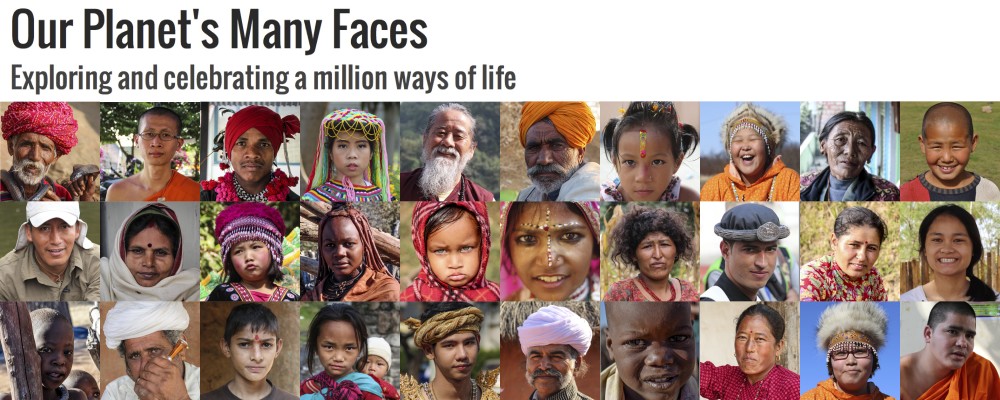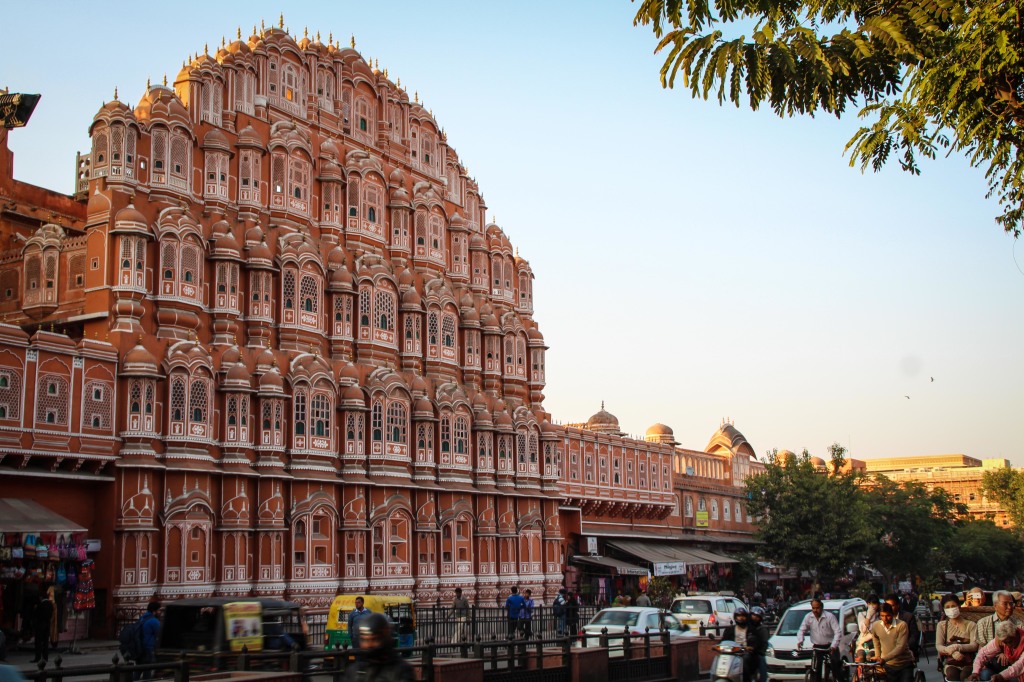
Jaipur, the “pink city,” is the hustling capital of Rajasthan, the desert state of India known as the land of kings and gypsies, palaces, forts, and temples. With a population of 6.6 million, this city is a mix of old and new, the famed ancient terra cotta colored homes lying at the core of the city. The streets are in constant motion with cars, overcrowded city buses, auto rickshaws, motorbikes, bicycles, foot traffic… and cows.
Cows are just one of the many animals considered sacred in Hinduism, and can be found wandering freely in urban settings throughout India. Monkeys, known for creating mischief in numerous temples throughout Asia, are also considered holy. The sacred status of both cows and monkeys in Hinduism has allowed these two animals much freedom within India, but has also created hazardous conditions for their survival.
Sacred Animals
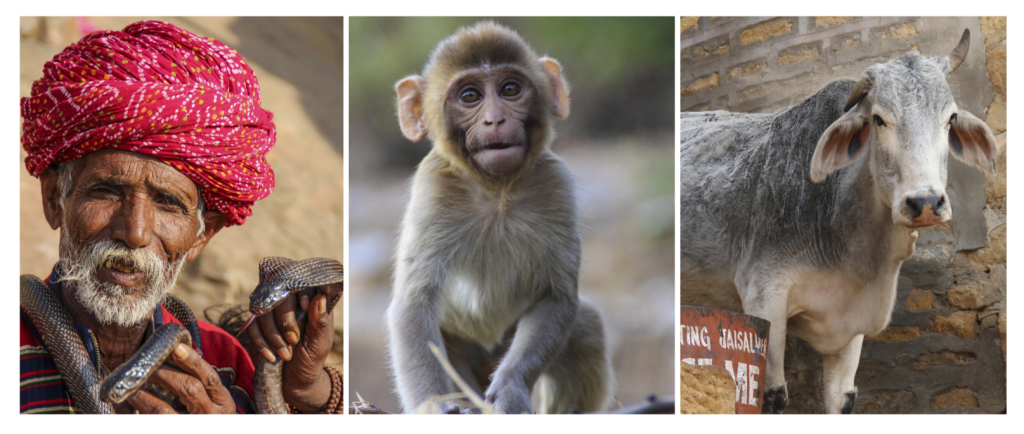
Approximately 80% of India’s population is Hindu, which plays a clear role in day-to-day lives and politics. According to Hinduism, animals have souls and are on the same reincarnation cycle as humans. Many animals also serve as symbols of gods, or served as vehicles of gods in Hindu mythology, and are thus honored.
As a result, the populations of cows and monkeys, have thrived, particularly in urban settings where food is abundant. To honor and care for these sacred animals, people place leftover food outside. In many cities, they have established feeding locations that resemble small garbage dumps. Dozens of cows graze at these locations, digging through plastic bags and boxes to retrieve food.
Similarly, many Hindus provide food for monkeys, which are believed to symbolize the Hanuman, a Hindu god of power. Tuesdays and Saturdays are dedicated to Hanuman, and at that time many people go to temples to feed them.
Thousands of monkeys live at the Galataji Temple, near Jaipur. (Video: Victoria Nechodomu/Nechodomu Media)
Risks and Inconveniences
India has the most livestock in the world, with over 250,000 million cattle said to make up one fourth of the world’s cattle population. There are 36,000 cows in Delhi, alone.
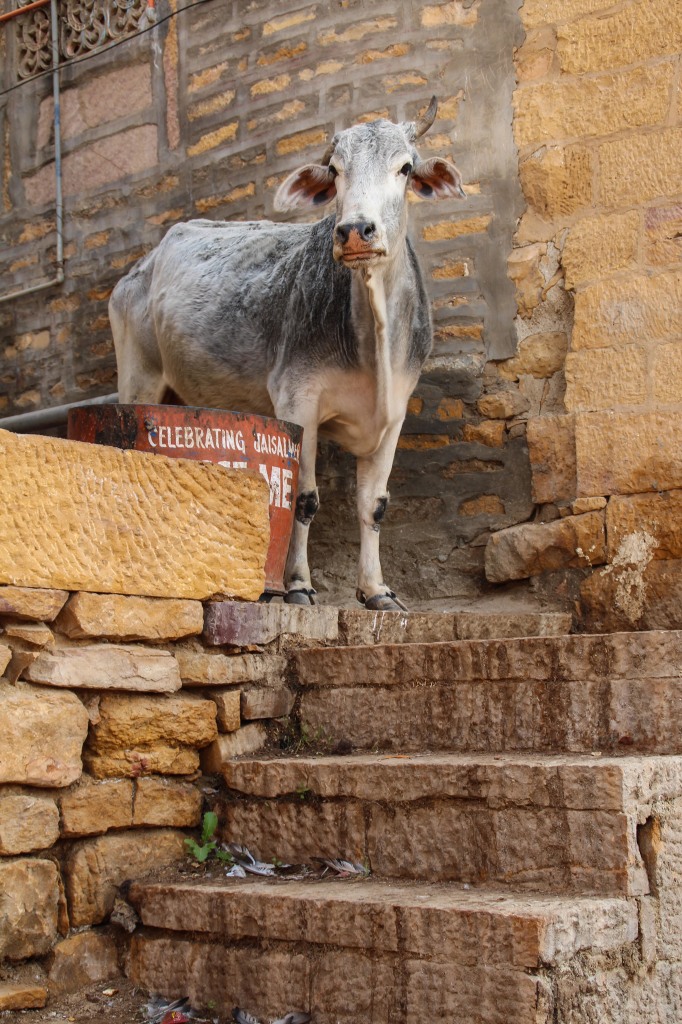
India is also home to 13 species of monkeys that form a population that has migrated in increasing numbers to the city. In New Delhi alone, 30,000 monkeys reside. The sacred status of cows and monkeys have led to many inconveniences for the human residents of cities, but has also led to many risks and hazards to the animals themselves.
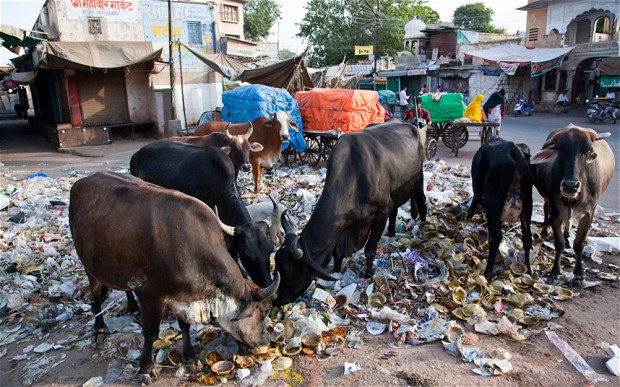
Cattle on the streets tend to cause traffic jams and accidents. Despite support from devote Hindus, many cows also suffer from malnutrition, as food donations are not enough to feed all the cattle and lands are overgrazed. Some cows are producing “toxic milk,” due to the amount of plastic and other waste they eat on the streets.
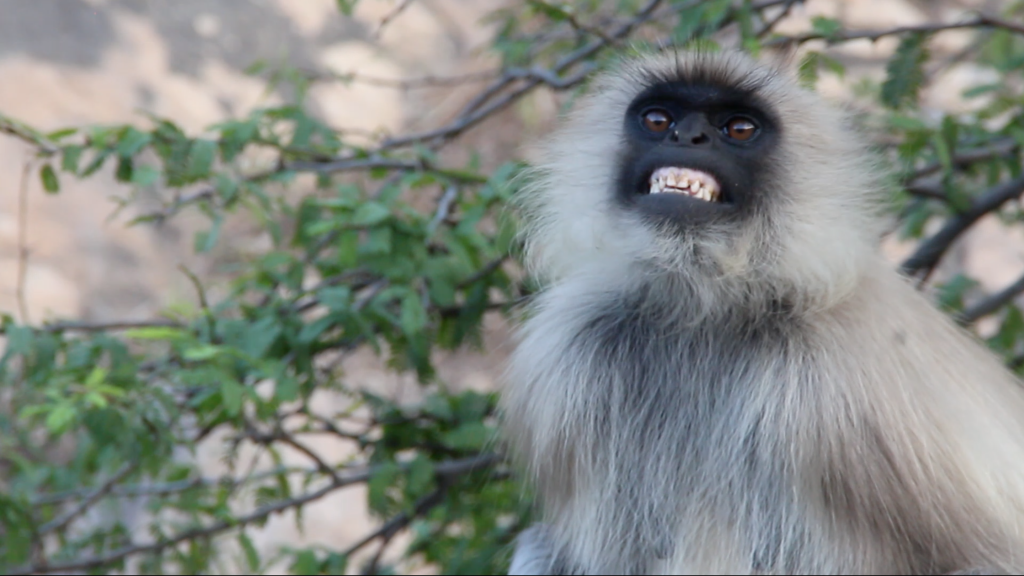
Monkeys pose a number of threats to humans, ranging from comic actions of theft to more serious acts of aggression and violence. Their presence in urban settings has led to many disruptions in homes and day-to-day life. Though rare, some monkey attacks on rooftops have even led to human deaths. The role of monkey temples throughout Asia has created concerns about the increased interactions between monkeys and humans, as well as the transmission of disease.
Searching for a Solution
Both the Hindu belief system, as well as Indian law, prevent people from slaughtering cattle. However, two states have legalized cattle slaughter, including Kerala, which sees 250,000 cattle per year. Some cities have opened cattle care centers, where cattle are kept safely off the streets and cared for.
Many cities have monkey catchers who catch particularly problematic monkeys. Over 13,000 monkeys have been captured since 2007 in Delhi alone. Other efforts to control the monkey population have included no-feeding laws, sterilization programs, and the use of the larger, more dominant langur monkeys or their urine to drive the macaque monkeys out of neighborhoods. Many of these have been found ineffective, or even made illegal. A more recent suggestion has even gone so far as to suggest putting monkeys on contraceptive pills.
